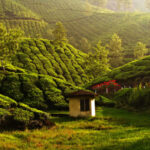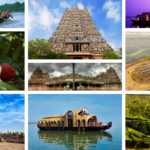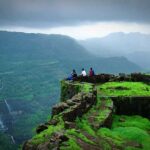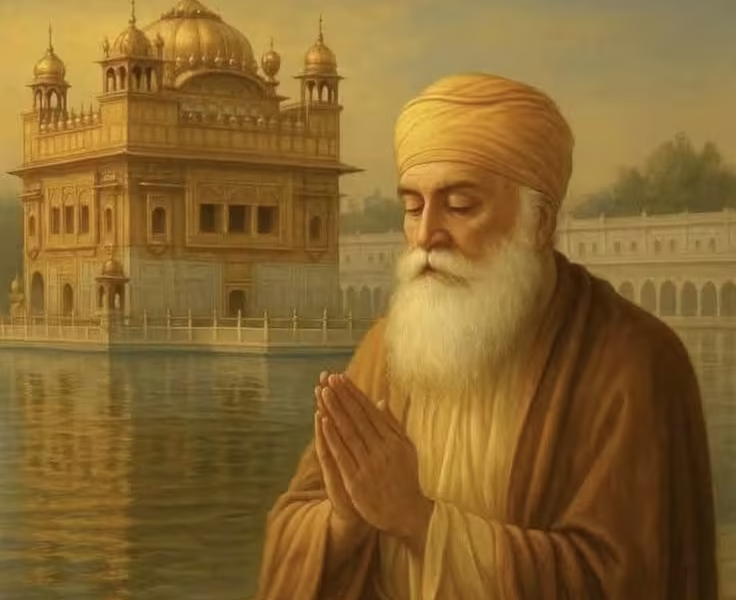Gurudwaras are Sikh places of worship, are famed for their cleanliness and langar (community kitchen to serve the poor), but they are open to all, regardless of religion, caste, occupation, or status.
In the 15th century, India saw the emergence of a religion that preached equality, bravery, and kindness. Sikhism, which was founded by the modest saint Guru Nanak, has proven to be one of India’s most prominent religions. This religion provided us a group of exceptional heroes who fought for the truth and became courageous pillars.
This religion provided us a group of exceptional heroes who fought for the truth and became courageous pillars. Sikhism is now India’s fourth-largest religion, with 2% of the country’s entire population adhering to it. Gurudwaras, or holy shrines, are sacred shrines that not only provide spiritual comfort but also provide insight into how Sikhism has survived.
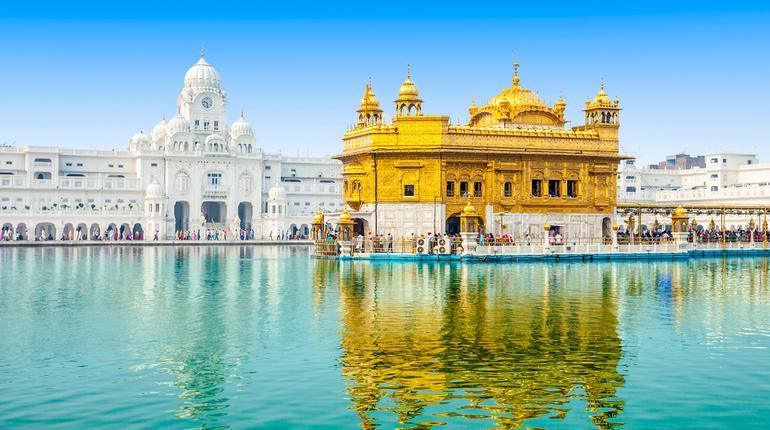
Table Of ContentToggle Table of ContentToggle
1. Guru Hari mandir Sahib, Punjab
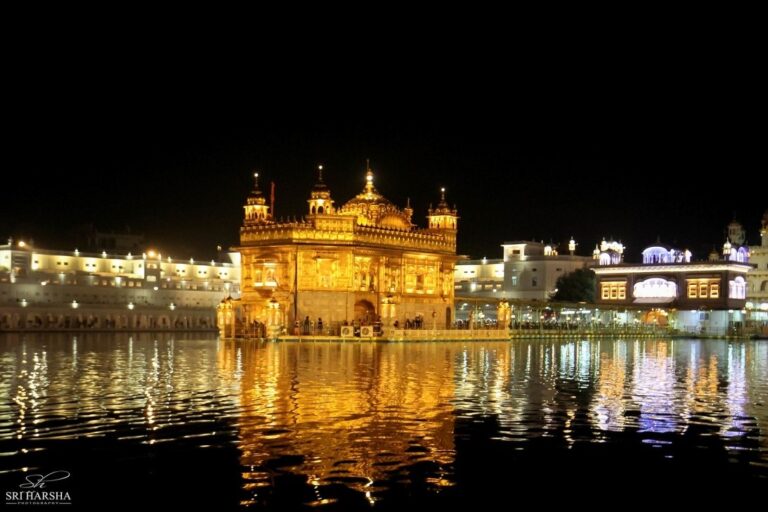
Hari Mandir Sahib is India’s most well-known Gurudwara. This Gurudwar is known as the Golden Temple and is located in Amritsar. Guru Arjan lay the foundation stone for this hallowed shrine in 1588, and the Holy Scripture known as the Adi Granth was put here in 1604.
Hari Mandir Sahib is India’s most well-known Gurudwara. This Gurudwar is known as the Golden Temple and is located in Amritsar. Guru Arjan lay the foundation stone for this hallowed shrine in 1588, and the Holy Scripture known as the Adi Granth was put here in 1604.
There are various memorial objects inside the gurdwara that honour the rich history of Sikhs, including as events, saints, and martyrs, as well as commemorative inscriptions of all Sikh troops who died in World Wars I and II.
2. Takht Sri Patna Sahib
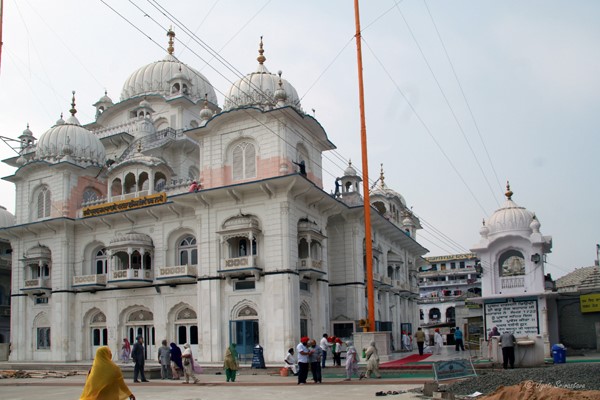
Takht Sri Patna Sahib is one of India’s most prominent Sikh holy sites, located in Patna. Patna is Guru Gobind Singh’s birthplace and the location where he spent many years of his life. Maharaja Ranjit Singh erected the Gurudwara in 1780 to commemorate Guru Gobind Singh.
In addition to being the birthplace of Guru ji, Takht Sri Patna Sahib is significant for Sikh pilgrims since Guru Teg Bahadur also visited and stayed in Patna.
3. Gurudwara Baba Atal Sahib, Punjab
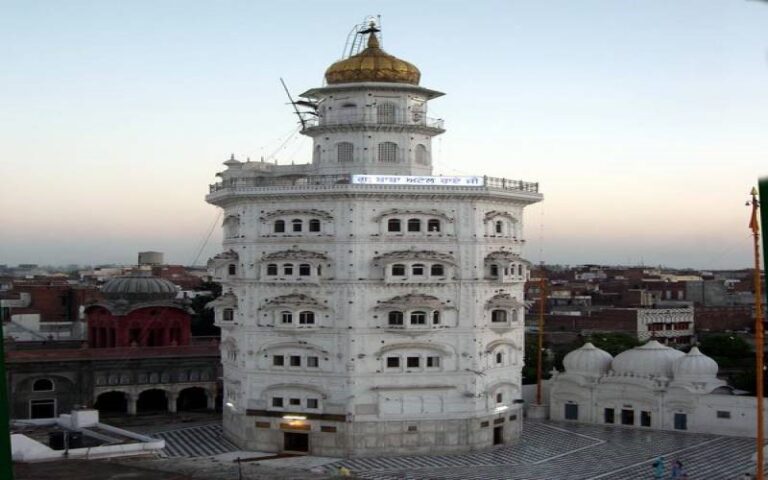
Despite the fact that Gurudwara Baba Atal Sahib in Amritsar is often overshadowed by Guru Harminder Sahib aka Golden Temple’s immense popularity, this sacred temple is one of India’s top Gurudwaras. Gurudwara Baba Atal Sahib was established to memorialise Guru Hargobind Singh’s son’s early death.
Gurudwara Baba Atal Sahib in Amritsar’s prominence being overpowered by Guru Harminder Sahib aka Golden Sanctuary, this precious temple is one of India’s top Gurudwaras. Gurudwara Baba Atal Sahib was built to honour Guru Hargobind Singh’s son, who died young.
4. Takht Sri Damdama Sahib, Punjab
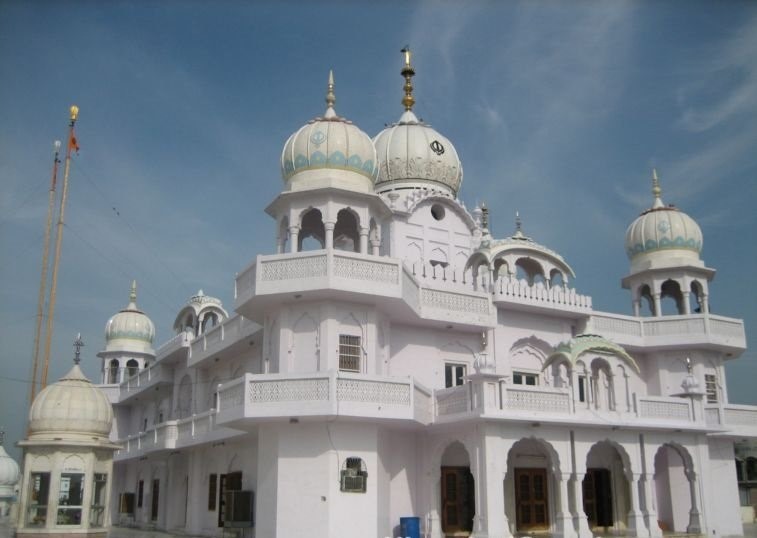
Damdama means “breathing place,” and it was in fact a resting site for Guru Gobind Singh after a battle in Talwandi Sabo. Bhatinda, Punjab is roughly 28 kilometres from Talwandi Sabo.
Damdama Sahib is one of Sikhism’s Takhts and a historically significant location, as it is here that Guru Gobind Singh composed the Bir of Sri Guru Granth Sahib. It’s also where Guru ji put the Singhs’ faith to the test.
5. Gurudwara Bangla Sahib, New Delhi
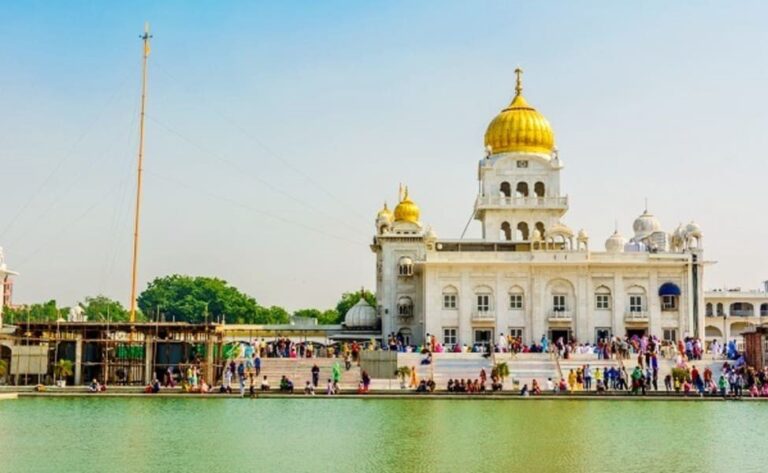
Gurudwara Bangla Sahib is one of the city’s most visible monuments. This Gurudwara was built to commemorate the stay of eighth Sikh Guru Har Krishan here between the 17th and 18th centuries (it was a bungalow in the 17th century and new construction was done in the 18th century). As previously stated, this sacred edifice was once a bungalow owned by Maharaja Jai Singh.
In 1664, when Delhi was ravaged by a cholera and chicken pox epidemic, Guru Har Krishan remained here. He aided the locals by providing them with safe drinking water from a nearby well. Guru Har Krishan, unfortunately, caught the sickness and died here.
Maharaja Jai Singh built a tank over the well, which is said to have medicinal properties, to pay honour to Guru Har Krishan. Gurudwara Bangla Sahib is now one of Delhi’s most well-known Gurudwaras.
6. Gurudwara Majnu Ka Tila, New Delhi
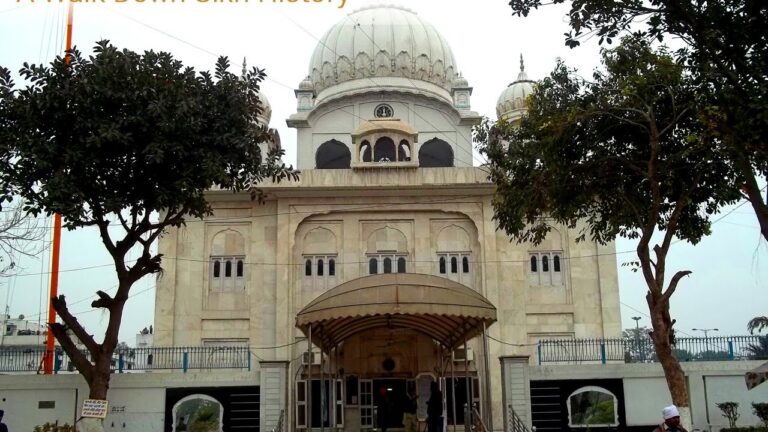
This Gurudwara, near the ISBT Kashmiri Gate in North Delhi, is said to be the city’s oldest Sikh shrine. The temple is named after a mound where Guru Nanak met Majnu (a free boatman who used to transport people across the Yamuna River). Baghel Singh, a Sikh leader, built a Gurudwara in 1783 to commemorate Guru Nanak’s visit.
Also, Guru Har Gobind Singh, the sixth Sikh Guru, remained here for quite some time, which is one of the reasons why this place is so revered by Sikh believers.
7. Gurudwara Mattan Sahib, Jammu & Kashmir
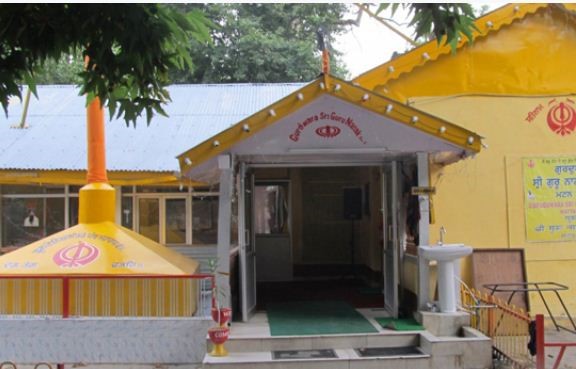
On the Anantnag-Pahalgam Road stands Gurudwara Mattan Sahib. Gurudwara Mattan Sahib was built by a Brahmin who converted to Sikhism after hearing Guru Nanak Dev’s powerful message. It is a symbol of eternal knowledge and faith in the highest being.
The Gurudwara was established on the foundations of ruined temples and is now one of Kashmir’s most prominent sacred sites, with Brahmins paying their respects alongside Sikhs.
8. Gurudwara Sehra Sahib, Punjab
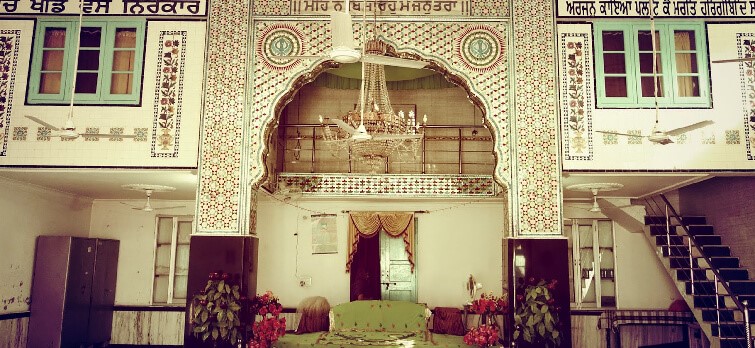
Sultanpur Lodhi City in Punjab is home to Gurudwara Sehra Sahib. Har Gobind Singh’s Sehra (Floral Headband) ceremony took place here, and the Gurudwara is named for him. Guru Har Gobind Singh stayed in Sultanpur Lodhi for the night on his way to Dalla for his wedding.
9. Takhat Sachkhand Sri Hazur Abchalnagar Sahib Gurudwara
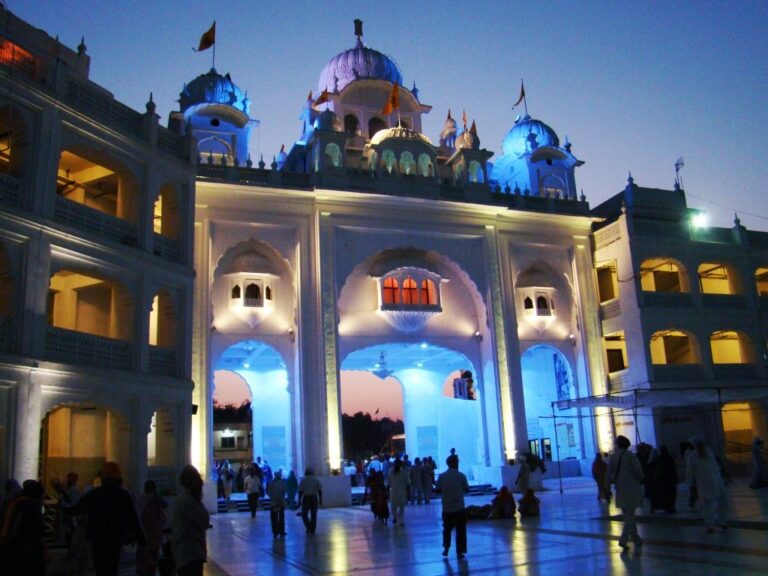
Nanded is home to the Takhat Sachkhand Sri Hazur Abchalnagar Sahib Gurudwara. It is the same spot where Guru Gobind Singh, the 10th Sikh guru, passed away. In 1832, Maharaja Ranjit Singh built a Gurudwara here, which is greatly respected by the Sikh community.
The Gurudwara’s complex is known as Sachkhand, or the Realm of Truth, and the room where Guru Gobind Singh breathed his final breath is known as Angitha Sahib.
10. Gurudwara Sri Hemkunt Sahib, Uttarakhand
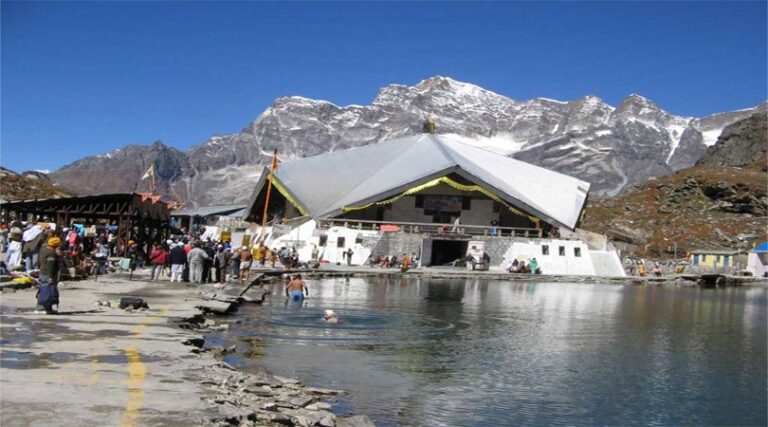
The architecturally significant Hemkunt Sahib is located in Uttarakhand’s Chamoli district. Gurudwara Sri Hemkunt Sahib is dedicated to Guru Gobind Sahib, the tenth Sikh Guru, and is located at a height of over 4000 metres above sea level. It is a star-shaped Gurudwara that was created with the current weather and altitude of the location in mind.
From October to April, this Sikh pilgrimage site is closed to the public, and it is only in May that Sikh pilgrims begin to flock here. Sri Hemkund Sahib, set amidst majestic snow-capped mountains, redefines spirituality.
11. Gurudwara Nanak Jhira Sahib, Karnataka
It is located in Bidar, Karnataka, and is one of India’s most important Gurudwaras. After a miracle event occurred here, the Gurudwara was given its name. Guru Nanak was residing on the outskirts of Mardana, where there was a water shortage and drinkable water was difficult to come by, despite the efforts of the village people.
Guru Nanak scraped some rubble from a section of the slope with his toes, and a spring of delicious water poured forth. The Gurudwara Nanak Jhira Sahib stands today on the other side of the fountain. Three times a year, on Holi, Dusshera, and Guru Nanak’s birthday, the Gurudwara is packed with followers.
12. Gurudwara Rewalsar, Himachal Pradesh
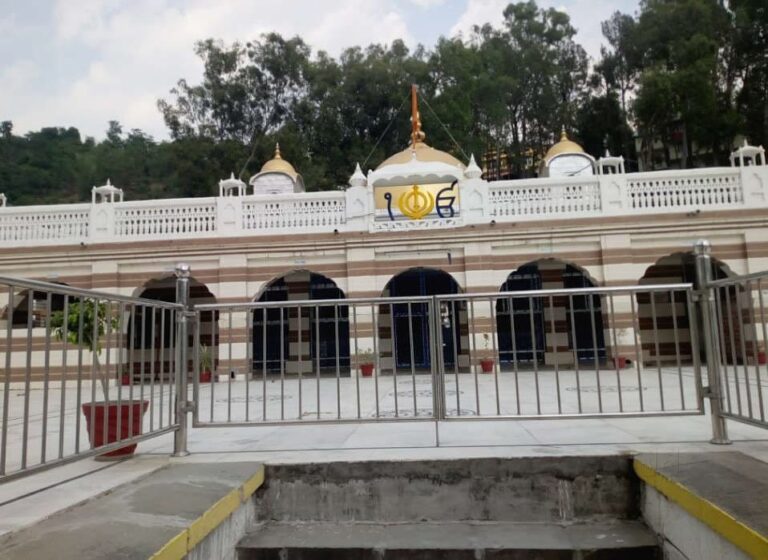
Gurudwara Rewalsar is located in Himachal Pradesh’s Mandi district. The Gurudwara was built on the same site where Guru Gobind Sahib met Mandi’s Raja Siddh Sen. The huge dome of Gurudwara Rewalsar, which is situated on a hill, can be seen from afar. To reach to this precious place of worship, one must climb 108 stairs.
13. Gurudwara Dera Baba Bharbhag, Himachal Pradesh
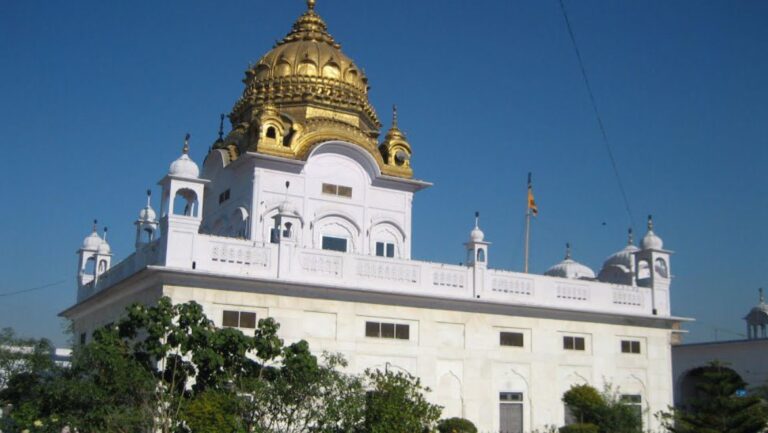
Gurbarbhag Singh is honoured at Dera Baba Bharbhag. Gurudwara Manji Sahib is the local name for this sacred site. It is a popular religious location in the area and sits atop a hill. Every year, the Hola Mohalla Fair, also known as the Baba Bharbhag Singh Mela, is held here; the celebration is said to have mystical properties.
Many people who are suffering from mental illnesses or are under the power of an evil spirit come here in the hopes of being cured of their ailments.
14. Gurudwara Sri Narayan Hari, Himachal Pradesh
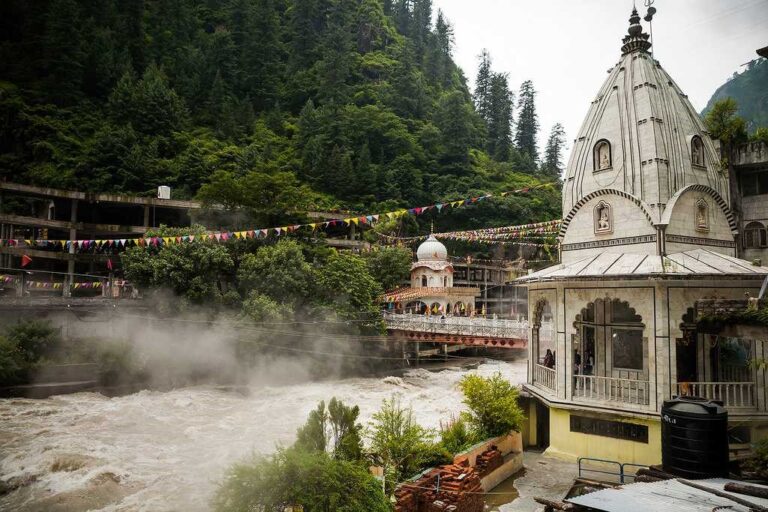
Gurudwara Shri Narayan Hari is located near Manikaran, about 45 kilometres north of Kullu. Baba Narayan Hari put up 50 years of constant effort to build the Gurudwara. According to legend, Baba Narayan arrived in Manikaran and began construction on a Gurudwara, where he built a tiny wooden structure.
This Gurudwara has had to deal with the wrath of the locals on several occasions, who have demolished it each time he attempts to restore it. Sant Narayan Hari, on the other hand, never gave up hope and built a larger Gurudwara within 50 years. Manikaran Sahib is now regarded as one of India’s most respected Sikh shrines.
15. Gurudwara Sri Paonta Sahib, Himachal Pradesh
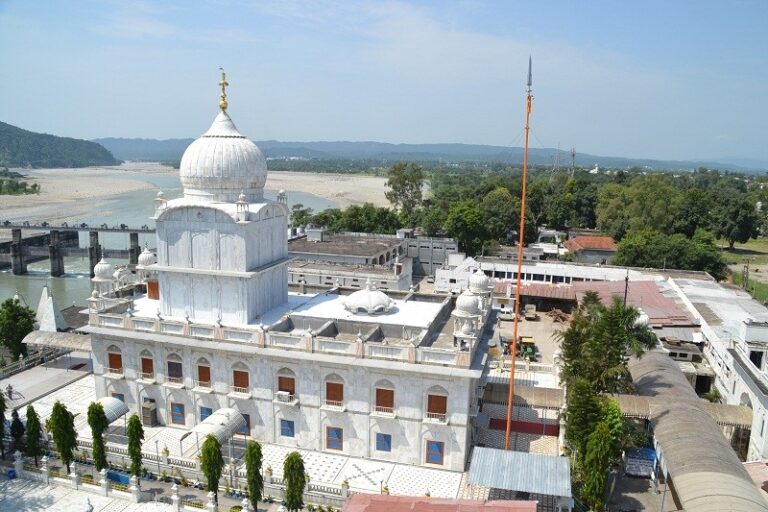
This Gurudwara is one of India’s most well-known Gurudwaras. It is located in the Himachal Pradesh district of Sirmour and is famous for being the location where Guru Gobind Singh penned the devotional Dasam Granth.
Paonta Sahib is a significant Sikh pilgrimage place that earned its name either because Guru Gobind Singh set his foot here or because he lost an ornament he used to wear on his foot here. In addition, there is an ancient temple devoted to the Yamuna River just close to the Gurudwara.
16. Gurudwara Anandpur Sahib
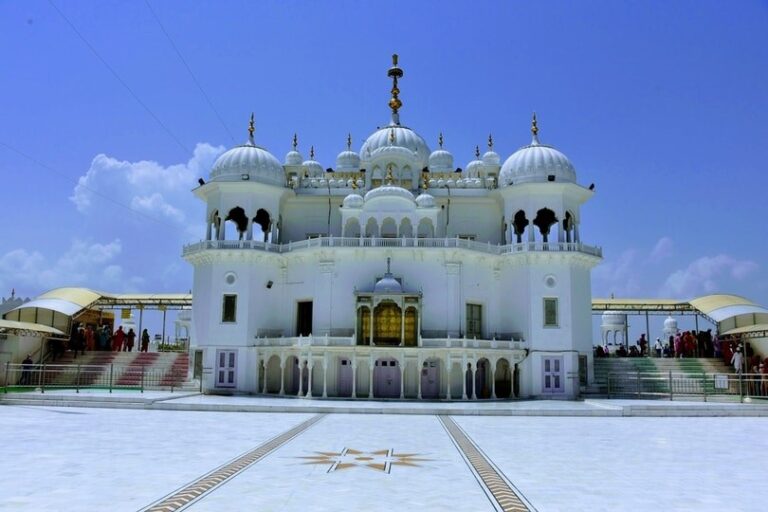
Anandpur Sahib is located in Chandigarh’s northwestern corner. The location has a significant religious significance as the Khalsa motherland. In 1664, Sri Guru Teg Bahadur Ji is said to have established the holy site.
People from all over the world visit this sacred site to pay their respects to their revered Guru. Takht Kesgarh Sahib is a hilltop shrine that consists of an enclosed square space with an open balcony. One section of this monument has a display of sacred weaponry.
17. Gurudwara Nada Sahib, Panchkula
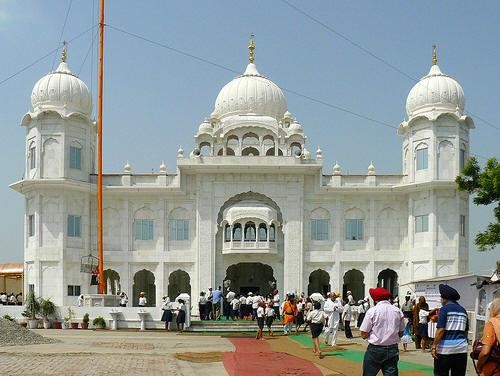
In the Sivalik foothills, Gurudwara Nada Sahib is located in Panchkula on the bank of the Ghaggar river. It is a well-known Sikh sacred site. After the Battle of Bhangani in 1688, Guru Gobind Singh paused here on his way from Paonta Sahib to Anandpur Sahib.
On one side of the courtyard, near the site of the former shrine, the holy flag floats atop a 105 foot (32 m) high pole. Every day, religious services and communal meals are held. Every month, the full moon day is observed as a joyous event by a huge number of people from the northern region, therefore it’s a good thing.

